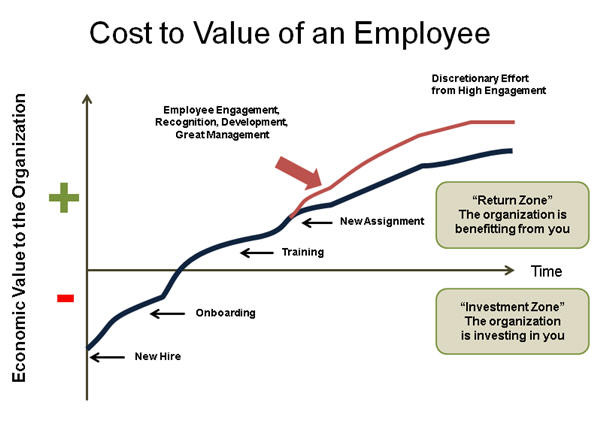It isn’t hard to find research that shows that having a more diverse team is better for a company’s bottom line. Harvard Business Review found that diverse teams are smarter, McKinsey found that diverse teams provide more profit when looking at both gender and race, and Credit Suisse found that large-cap companies with at least one woman on the board have outperformed their peers with no women. These are just a few of the many research examples that you might find if you are searching for reasons to convince your leadership to pay attention to having a more diverse workforce.
We would argue, however, that you might be putting the cart before the horse. Many times we see organizations focus on bringing more diversity into their ranks, only to end up failing because they aren’t set up to support and welcome in that diversity. We would hate for you to spend all of your time focusing on bringing underrepresented groups into an environment that wouldn’t be welcoming to them. The attrition rate would be high and costs could actually go up, as we’ll show below. What we recommend therefore, is that you may want to consider starting with creating an inclusive environment, where everyone feels welcome, regardless of their race, gender, sexuality, age, ability, etc. Once that inclusive environment has been established, you can focus on bringing more voices to the table.
What does inclusion mean?
When we refer to inclusion, we mean that you can identify in whatever way you choose, walk into a space, and won’t feel judged, ignored, treated unfairly, or offended. Creating an inclusive work culture can mean many things (we’ll outline this in a future blog post), but here are a few examples of what an inclusive culture isn’t:
- Favoring certain employees (whether that’s in assignments or promotions)
- Not creating space for everyone to speak in a meeting
- Having meeting rooms that are named only after white men
- Having a work culture that centers ‘fun’ around easily accessible alcohol (while not recognizing that many people do not partake for a variety of reasons, including having trouble with alcohol, religious reasons, health reasons, etc.)
Now that we’ve elaborated a bit on what inclusive culture means, if there are changes you would like to see at your company, how do you get senior leadership to buy in?
One way is to see if there’s much turnover. Whether or not turnover is largely within underrepresented groups, the problem is similar: people are leaving and one very possible reason for this is they don’t feel included, heard, appreciated, or understood. Once you’re able to understand what turnover looks like, who is leaving and why, you can inform senior leadership with facts and data.
Another option, if you’re in a position to do so, is to conduct an anonymous engagement survey to get a beat on how people are feeling. There are loads of tools that will help facilitate this. We like CultureAmp and OfficeVibe, and you can always use existing survey tools if you have them. The idea is that you’re starting with data that hits closest to home – your actual employees. Then you can begin to elaborate on and back this research up with some research on retention and engagement.
Research on Retention
- A recent report revealed that it costs a company 33% of a worker’s annual salary to replace them.
- Deloitte has shown that the true costs of losing an employee go well beyond salary numbers. According to them, the total cost of losing an employee can be as much as 1.5-2X the employee’s salary when you consider the following factors:
- The cost of hiring a new person
- Onboarding costs
- Lost productivity and engagement
- Training costs
- And more
One of our favorite ways to depict the case for retention is also from Deloitte. When making the case for inclusion, consider the below graphic. We like to think that as soon as someone starts they’ll hit the ground running, but the reality is different. It takes time to ramp someone up so that they become a productive member of the team. That time has value, which is lost once that person leaves.

Source: Employee Retention Now a Big Issue: Why the Tide has Turned
Research on Employee Engagement
- Business or work units that score in the top quartile of their organization in employee engagement have nearly double the odds of success when compared with those in the bottom quartile.
- Engaged employees make it a point to show up to work and do more work — highly engaged business units realize a 41% reduction in absenteeism and a 17% increase in productivity. Engaged workers also are more likely to stay with their employers. In high-turnover organizations, highly engaged business units achieve 24% lower turnover. In low-turnover organizations, the gains are even more dramatic: Highly engaged business units achieve 59% lower turnover. High-turnover organizations are those with more than 40% annualized turnover, and low-turnover organizations are those with 40% or lower annualized turnover.
- 68% of employees experience work overload, and they believe this is most harmful to their productivity.
- Disengaged employees cost organizations between $450 and $550 billion annually.
- Trust between employees and senior management is gaining importance.
We hope that you can use this information to assist you in making your own argument as to why inclusion needs to be addressed before (or at least in tandem with) a focus on bringing underrepresented groups into your company. By combining company-specific information with general statistical information on this issue, you’ll be in a strong position to convince senior leadership to prioritize retention. Don’t lose heart if you can’t move the needle right away. Ultimately the desire for change is not always generated by numbers, and we applaud you for working hard to support meaningful change, big or small – and that necessitates starting with education.
Photo credit: iStockPhoto
